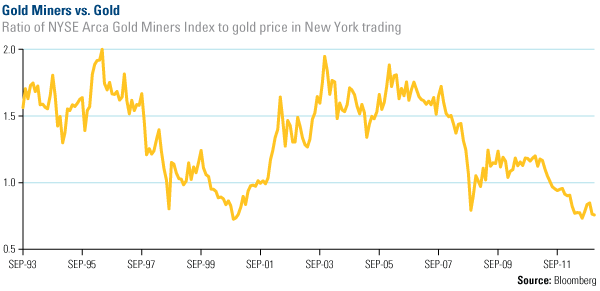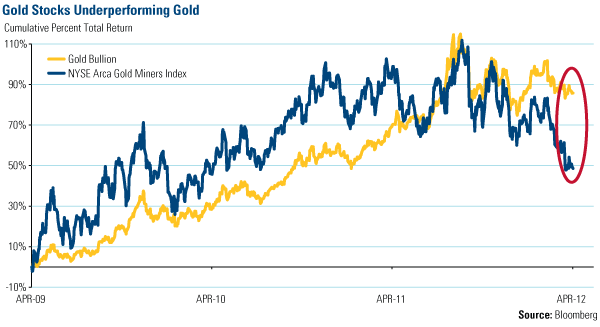Kenneth and Company 12 Guidelines for Buying Gold Mining Stocks
Post on: 4 Июнь, 2015 No Comment

The following twelve guidelines should help you to better understand some investment basics regarding the mining industry, especially if you do not have a background in geology or mining engineering.
I have tried to keep this as non-technical as possible so no one falls asleep. Keep in mind, these are basic guidelines and far from complete.
- If the company does not have an independent professional resource calculation for gold or silver or other minerals, know that someone is either speculating or guessing at the most critical data point regarding mining industry valuations. Be careful not to confuse resources with reserves. Measured and Indicated resources are reliable as a resource. Inferred resources are very speculative mineral inventories, so be careful when inferred is used. A resource still has a long way to go to become an economic deposit, as opposed to reserves which are deemed to be proven economic and mineable ounces calculated by very strict engineering and government rules. Canada’s National Instrument 43-101 is one such guideline regarding resources and reserves.
Companies with lots of money in the bank or access to sponsorship from top investment banks in Toronto, London and Vancouver is vital in this capital intensive business and always a good thing to look for. Diversify: have at least 15 good companies. Depending on your risk tolerance you could allocate a small portion to grass roots exploration stocks but know this is the very high-risk end of the business.
The industry has changed in the last five years. Exploration and development budgets from 1998 to 2002 declined dramatically. Therefore going forward, in my opinion, any substantial project that is near feasibility (an extensive outside engineering report based usually on tens of millions of dollars of geological, metallurgical, and engineering work) could be a buy-out candidate for major and mid-tier companies that need to catch up on reserve replacement and growth.
Tonnage is important. Big tonnage operations create economies of scale that can make some low metal values economic to mine. Three hundred million tonnes (a tonne is 2204.62 pounds, not to be confused with a ton which is 2000 pounds) for an open pit gold mine is big. Ten million tonnes open pit is small. For an underground operation, tonnage can vary dramatically and grade and mining widths become more important (we will discuss this below), but one million tonnes would be small. For a base metal open pit deposit, one billion tonnes would be huge, while 20 million tonnes would be small. So remember in this business – Big is Beautiful.
With underground mines, everything changes: depth, the continuity and mining widths of the ore and the vertical or horizontal plane of the ore all comes into play as well as many other factors. Generally, to be on the safe side, if you can find gold grades of 10 grams (about a third of an oz.) or more per tonne across mineralized sections averaging 3-4 meters or more in width, then you are looking at good potential. Lower grades across wider widths also work (i.e. 6-7 grams across 10 meters) Keep in mind these are rough guidelines and subject to many other factors, like depth, vein continuity, overall tonnage and much more. But the sweet spot in this industry is high grades across wide zones of mineralization.
I like low cost producers. They are safer, have lots of cash flow to buy new properties and mines, will have more funds for exploration and development and could eventually pay strong dividends if gold stays in a new high price range over the years (i.e. $450-500). Also large mining companies are not going to buy-out high cost producers. They are risky and migraine headaches for management.
Mining costs are mostly a function of grades, mining widths and tonnage. If you can talk to a mining engineer and get a handle on the cost per oz. or tonne of the operation, you are acquiring crucial data for your analysis. Companies operating at high costs (within $100 of the gold price) or that have projects that look like they will be high cost producers should be avoided. High costs equal high anxiety.
Producing companies if bought out, can go for $100 to $150 per ounce of reserves in the ground. That is an important guideline. You do not want to buy a stock where you are already paying $100 per ounce for just a resource (which means the reserve will actually be lower). With the company just in the advanced exploration stage, there wont be enough upside unless the deposit gets a lot larger. Advanced developmental (meaning feasibility to actual construction) companies can be bought out for $40-75 per ounce of resource or much more depending on many factors that are beyond the scope of this writing.

Usually the value of the ounces and the stock price go up as more and more confidence is gained in the project. Initial resource definition usually allows for a value of $5-10 per ounce. At the bankable feasibility stage those same ounces could be valued at $40-75 per ounce.
If you see a mining company with a well defined resource and the gold ounces are valued at only $5 per ounce or so, just know there is probably a reason and it is probably bad. Most likely those ounces will never see daylight due to any number of reasons: environmental, logistics and infrastructure problems, political risk, low grades, high capital costs, narrow mining widths, high strip ratios (how much waste rock has to be removed to get to the ore in an open pit operation) and a host of other reasons. There is a right price for the ounces, dont overpay.
Companies expecting cash flow from future projects are usually valued using a net present value criteria. In this method the entire future cash flow of a mine is laid out and a value is placed on this cash stream, taking into consideration the time value of money. How much is the $500 million dollars that the mine will make in the years 2008 through 2018 worth today in the present. The future cash flows have to be discounted in order to arrive at some sort of present value for the projects. Many times a 5-10% discount rate is used. I believe a lower discount rate is also OK, since gold is an anti-discounting currency (i.e. gold’s price should go up with inflation and interest rates therefore negating the discount rate — because it will keep its future purchasing value).
Earnings per share is a tricky stat for the miners because of so many non-cash charges and accounting complexities. In the long run it all comes out in the wash, but during the years of the life of a producing mine, cash flow is the king. Look hard at cash flow per share or expected cash flow from projects.
Comparables are very important. Why would you buy a stock where for every $1 you invest you get $5 of gold in the ground when another company with very similar fundamentals and resources gives you $40 of gold in the ground for every $1 you invest. There actually may be a good reason, but the point is you should know what that reason is . Comparisons are an important ingredient to avoid overpriced companies and missing some real bargains. We constantly do comparables at Kenneth J. Gerbino & Co. and I suggest you do also. One should compare the basics: grades, tonnage, costs per ounce, costs per tonne, smelter charges (for base metal deposits), reserve or resource value per dollar invested, market cap per reserve/resource ounce, discounted cash flows and the net present values of the mining assets. Comparables allow you to better shop the market.
Well, there you have some basic guidelines that I hope will help you through all the press releases and some of the direct mail hoopla about all the billion dollar mountains out there. Remember the more homework you do the better off you will be. For other articles on gold and the economy please check out the Commentaries section on this web site.
Good luck in what looks like a long-term, mostly bullish precious and base metal market.














